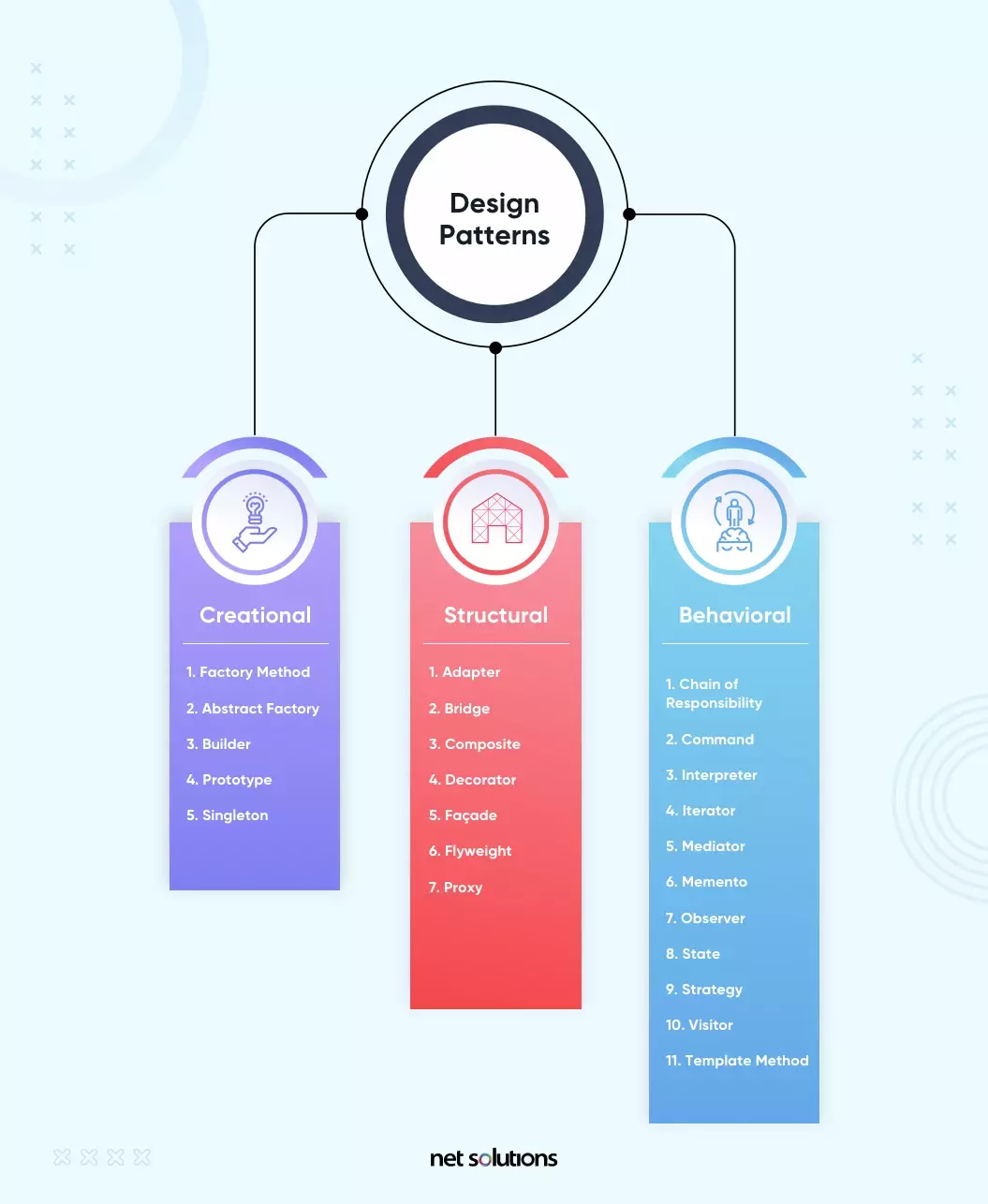Programming design patterns are reusable solutions to common problems faced by software developers. They provide a way to structure code in a more efficient and maintainable manner. Design patterns are not specific to any programming language, but can be applied in a variety of programming languages such as Java, Python, C++, and many others.
There are several types of design patterns including creational patterns, structural patterns, and behavioral patterns. Creational patterns focus on the process of object creation, such as the singleton pattern, which ensures that a class only has one instance, or the factory pattern, which provides a way to create objects without specifying the exact class of object that will be created. Structural patterns deal with object composition, such as the adapter pattern, which allows classes with incompatible interfaces to work together, or the composite pattern, which allows you to build complex objects from simpler ones. Behavioral patterns deal with communication between objects, such as the observer pattern, which allows objects to be notified when changes occur, or the strategy pattern, which allows objects to change their behavior dynamically.
One of the benefits of using design patterns is that they can help to reduce the amount of time and effort required to solve common problems. Design patterns have been tried and tested, and are widely used in industry, so developers can rely on them to be effective solutions. Additionally, design patterns can help to improve code readability, making it easier for other developers to understand and maintain the code. This can also make it easier to collaborate with other developers, as everyone can follow the same design patterns, leading to a more consistent codebase.
However, it is important to use design patterns judiciously and not overuse them. Overusing design patterns can lead to over-engineering, making the code more complex and harder to maintain. It is also important to understand the underlying principles behind each pattern, rather than simply copying and pasting code. This will help to ensure that the pattern is applied correctly and that it is used in the appropriate context.
In conclusion, programming design patterns are a valuable tool for software developers, providing efficient and maintainable solutions to common problems. While it is important to use design patterns judiciously, they can greatly improve the quality of code and make it easier to collaborate with other developers. Understanding the principles behind each pattern is key to using them effectively and ensuring that they are used in the appropriate context.
- Diego Herrera Redondo

Comentarios
Publicar un comentario